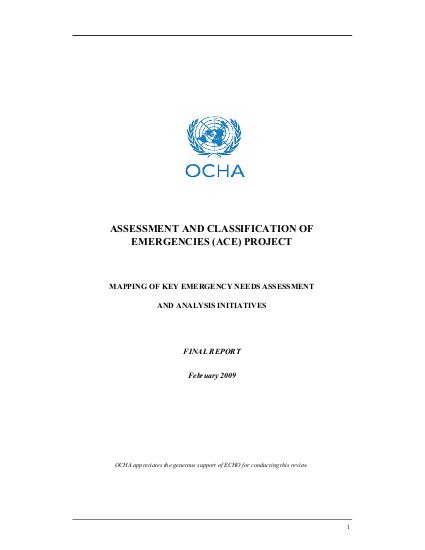
Within the humanitarian response field, there are increasingly strong calls for the improved assessment and analysis of needs at all phases of an emergency, including established indicators, definitions, and assessment methodologies, standardized information requirements, and accepted thresholds for humanitarian action. Improving assessment and analysis in this way would support the identification of acute humanitarian needs and create a solid evidence base for humanitarian decision making regarding the level and type of action required to respond to those needs. Central to meeting these challenges is improving coherence among the multiple tools and practices that exist to assess needs within the humanitarian community.
This report covers the main assessment and analysis framework initiatives currently underway at the global level, including major humanitarian standards, multi-cluster assessments, cluster or sector-specific assessments, and analysis framework initiatives. The wide range of multi- sectoral and/or sector-specific tools that have been developed at the field level are not included, including those developed by donors. Also, long-established early warning or monitoring systems (e.g. for food security) are not covered, except for a few new initiatives which serve both monitoring and assessment functions.